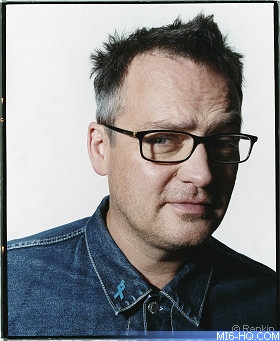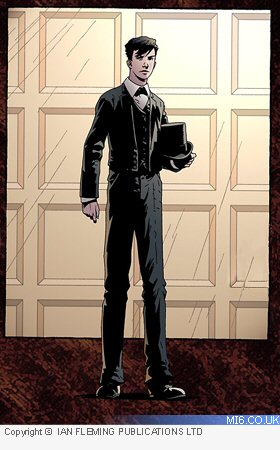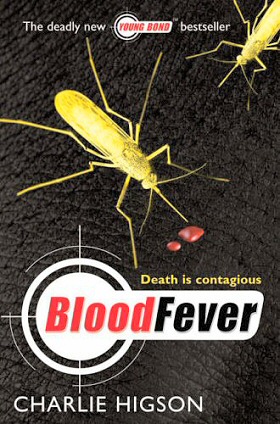 |
| |
MI6 talked to author Charlie Higson on the launch
of his second Young James Bond book "Blood Fever"
about the new adventure...
|
|
Blood Fever: In Conversation With Charlie Higson
(2)
19th January 2006
Exclusive: MI6 caught up with Young James Bond
author Charlie Higson about his second novel Blood
Fever. Speaking for the first time to a 007 website about
the new book, Charlie Higson discussed his work on Blood Fever
and the Young Bond series in this serialized MI6 interview.
In this second Young Bond book, Bond has seen a lot
of action and death. By the fifth novel are we going to
be seeing a Bond that is more comfortable around death?
No, in the adult books he’s still not comfortable
around death and he doesn't like killing people. He tries
not to if he has to. He never relishes it. Violence is always
a last resort, certainly killing people. It’s not
like the films where he’ll casually whip out a machine
gun and mow a lot of people down. He always thinks about
what he’s doing and the consequences of it all.
By book 5 he will have seen a quite lot and been thought
quite a lot. But he’s still going to be a young kid
and I think the implications in Fleming’s books, and
certainly in Fleming writing about stuff, is that Bond became
who he was because of what happened to him in the Second
World War. It was the same for a lot of men who became aware
of the brutality of war and the things that men are capable
of. Particularly, the thing that appalled Fleming and fascinated
him at the same time were the reports of torture from spies
he was working with. That influenced what he had his villains
get up to in terms of torture.
|
|

Above: Author Charlie Higson |
He always said that after what people learned in the Second World
War, you couldn't go back to that innocent state. So to stay true
to Fleming, as true as I can, Fleming implied that Bond had a fairly
ordinary childhood up until he went to war. Obviously that’s
not what’s happening in my books. If Fleming had gone back
to James Bond’s childhood it wouldn’t have been anything
like what’s in my books. But I’m writing James Bond
books so you have to have all that stuff in it. Part of the interest
for me through the books is to show James Bond growing up learning,
toughening up developing that kind of tough shell about himself
that we see in the later books. But I can’t take him too far
as he’s still going to be 13 – 14 years old, I’m
not going to take him through his teenage years. I’m certainly
not going to take him up to the war. So he will grow a bit, but
he’s a character that has to be attractive to young kids,
and so I want him to keep his humanity.
| 
|
|
In the book Amy’s attitude towards Zoltan changes
as the story develops. What was the inspiration for that?
The inspiration for a lot of that is actually from a fantastic
kids book and film called “High Wind in Jamaica”,
which is about piracy and some kids who get kidnapped and
this weird bond that developed between a verging on adolescent
girl and this pirate. That was my inspiration.
Towards the end of the book we see a Bond that is more
cynical. By the fifth book how much more cynical will he
get?
He does go through a lot so he will become a little more
cynical. The other thing that I am trying to develop a bit
is the whole thing about Bond’s boredom that Fleming
occasionally described in the books. This idea of needing
constant excitement and danger, and that once you’ve
had a certain level of that it’s hard to go back.
You miss it when you haven’t got it, even though you
might be terrified at the time, there’s that constant
need for thrill and excitement.
He will become a little more cynical, but again going back
to the fact that he’s got to remain attractive to
younger readers, he will always stay fairly human. |
In “Blood Fever”, Bond is shy around alcohol, is
this going change as far as you take him?
It’s a very tricky one because of what you can and can’t
do in a kids book really, you can’t promote the drinking
of hard liquor to ten year olds. But you know, in the thirties,
standards were probably more lax - certainly in Eton there was
a pub in the school for the boys. So I’m getting in as much
as I can, but I’m also trying to get a little bit towards
a responsible attitude towards drinking which is “know your
limits, don’t be stupid” - the whole point of drinking
is not to get drunk. In Ian Fleming’s books Bond drinks
a lot but he’s in control. Thankfully he’s got an
enormously high tolerance of alcohol, he tends to down a huge
number of units and then go driving around in his Bentley.
I don’t want to promote the drinking alcohol to kids but
at the same time I do think learning to drink safely and sensibly
with your parents is something that kids need to do to understand
the risks and also the dangers of alcohol. But in the third book
I’m writing now, one of the things the villain tries to-do
is to kill James Bond by force feeding him alcohol, so I’m
hoping that that will show kids the responsible and irresponsible
ways to approach drinking and that it is a poison. But also, it’s
a way of setting up Bond’s tolerance to alcohol and his
relationship to alcohol later in life.
We see the deaths of two of Bonds school teachers
in “Blood Fever”. Are these deaths going to
impact anything in the next book?
It’s very tricky writing these books. I was given
the brief at he start by the Fleming’s, they said
they wanted all the books to take place with Eton as the
background, that’s where he was in his life. But it
does become tricky. He goes off and has these extraordinary
adventures, and as you say people get killed and that would
change things, but in any series like this you have to have
a certain suspense of disbelief. To do it in the Fleming
books they don’t always add up if you try to write
it down and say this is what Bond did from day to day it
wouldn’t necessarily make sense.
In a TV series like Inspector Morse for instance, it’s
totally implausible that that number of professors at Oxford
could be slaughtered. In the series “Midsummer Murders”,
this tiny little village, the number of weird murders that
go on is totally implausible. Also with a series of books
like this for kids the idea that kids could pick up any
book in the series and read that first and not feel that
they were missing out on a huge amount of back-story. It’s
not like Harry Potter where you’ve got this evolving
story over the books and he gets older all the time.
So you have to sort of treat each book in isolation and
if I put too much in the new book about what happened in
the last one and the implications and ramifications of that
it would get weighed down with too much back story. So it
is hinted at and eluded to. In SilverFin the idea at the
end was that he had got away with it and they were keeping
quiet what had gone on and that nobody would ever know.
|
|

Above: UK Puffin 1st edition paperback
artwork
UK
Publisher: Puffin
Format: Paperback
Pages: 384
Released: 5th January 2006
 Buy
Now
Buy
Now
|
|
USA
Publisher: Miramax Books
Format: Hardback
Pages: 368
Released: June 2006
 Buy
Now
Buy
Now |
|
It’s a little bit harder in Blood Fever because we have
the fact that everything and everybody is washed away when the
dam breaks. It’s implied at the beginning of the third book
that its was covered up and a tragic accident and some people
died when a dam broke. So again, Bond can keep out of the way.
The third book involves more teachers from Eton and stuff like
that. It’s probably not until the fifth book where everything
will come to a head and all the kind of strands will come together.
But as I say, in the other books I don’t want to get too
weighed down with having to go over what happened in the previous
one.
Stay tuned to MI6 for the next installment.
Many thanks to Charlie Higson.